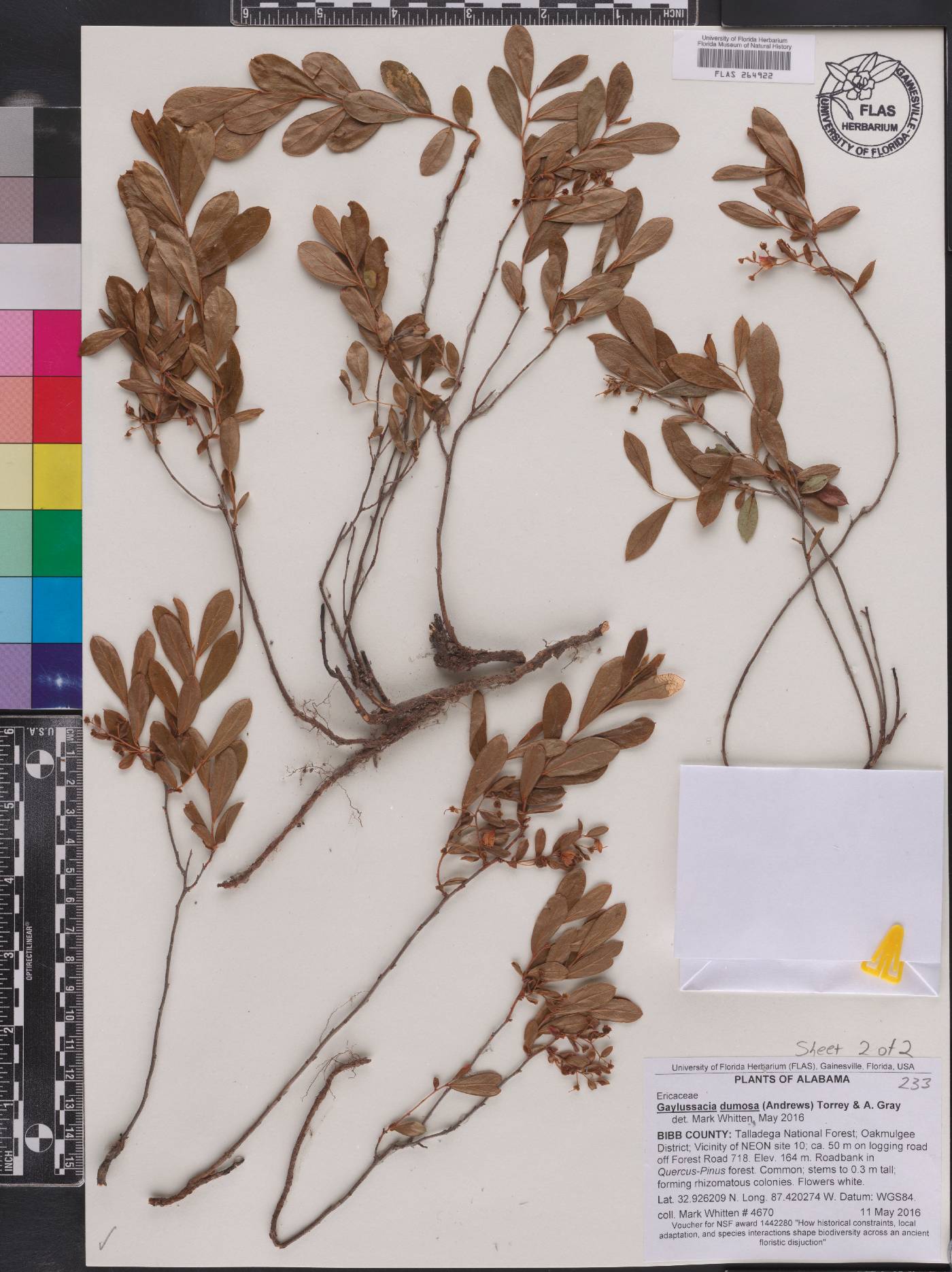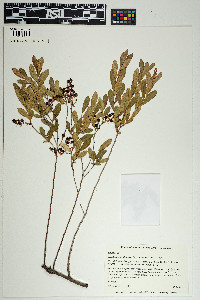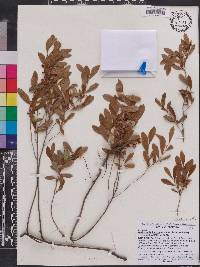|
|
|
|
Family: Ericaceae
dwarf huckleberry
[Gaylussacia dumosa var. bigeloviana Fernald, moreGaylussacia orocola (Small) Camp, Lasiococcus dumosus (Andr.) Small, Lasiococcus dumosus var. bigelovianus (Fern.) Fern., Lasiococcus orocola (Small) Small] |
Plants 1-3(-4) dm, forming small colonies; branches ascending; twigs of current season pale green, stipitate-glandular-hairy. Leaves: petiole 0.5-1.5 mm; blade light green abaxially, shiny dark green adaxially, oblanceolate to obovate, 2.5-4 × 0.3-1 cm, subcoriaceous, base cuneate, margins entire, (scattered stipitate-glandular-hairy and ciliate, 2-5 cilia per mm), apex obtuse to subacute, mucronate, surfaces scattered stipitate-glandular-hairy and sessile-glandular, adaxial surface sometimes glabrescent. Inflorescences erect or arching, 5-8-flowered, bracteate, 3-6 cm, stipitate-glandular-hairy; bracts persistent, leaflike, expanding to 5-12 mm, equaling or longer than pedicels, hairy and stipitate-glandular-hairy. Pedicels 2-3 mm, hairy and stipitate-glandular-hairy; bracteoles 1-2, 2-5 mm. Flowers: sepals 5, 2 mm, sparsely to moderately hairy (hairs 0.2-0.3 mm) and stipitate-glandular-hairy; petals 5, corolla white to pink, sometimes reddish, campanulate, 3-5 mm, lobes triangular, 1-1.5 mm; filaments 0.3-0.5 mm, sparsely hairy; anthers included, 3-3.5 mm, thecae divergent distally; ovary stipitate-glandular-hairy, hairs 0.2-0.3 mm. Drupes juicy, insipid, black, 6-8 mm diam., stipitate-glandular. Seeds 1.5-1.8 mm. Flowering late spring-early summer. Xeric sandhills, xeric to dry pine-oak uplands, oak barrens and heaths, mesic to wet pine flatwoods and pine barrens, dry to moist pine savannas, sometimes in seepage communities; 0-1200 m; Ala., Fla., Ga., La., Miss., N.C., S.C., Tenn., Va., W.Va. Gaylussacia dumosa and G. bigeloviana have been confused due to a reliance on insufficient characters to distinguish them and due to descriptions and ranges that were based partly on misidentified specimens. Gaylussacia dumosa is a low shrub of the coastal plain and lower piedmont, with scattered occurrences in the upper piedmont and at moderate elevations in the mountains.
Colonial by long, woody rhizomes, sending up leafy branches 2-5 dm; lvs deciduous, oblanceolate to obovate, 2-4 cm, entire, inconspicuously stipitate-glandular; racemes rather dense; bracts oval or oblong, foliaceous, persistent, 5-12 mm; pedicels, hypanthium, and cal pubescent and copiously stipitate-glandular; sep glandular-ciliate; cor 5-9 mm; fr black, hairy, 5-8 mm. Usually in wet, sandy soil or in bogs, on or near the coastal plain; Nf. to Fla, and La. May, June. (Lasiococcus d.) Var. bigeloviana Fernald, from Nf. to Va., has the bracts conspicuously glandular and the fls 7-9 mm. Var. dumosa, from L.I. to La., has thinner bracts, often shining, sparsely glandular to glabrous on the surface, the fls 5-7 mm. Gleason, Henry A. & Cronquist, Arthur J. 1991. Manual of vascular plants of northeastern United States and adjacent Canada. lxxv + 910 pp. ©The New York Botanical Garden. All rights reserved. Used by permission. |




